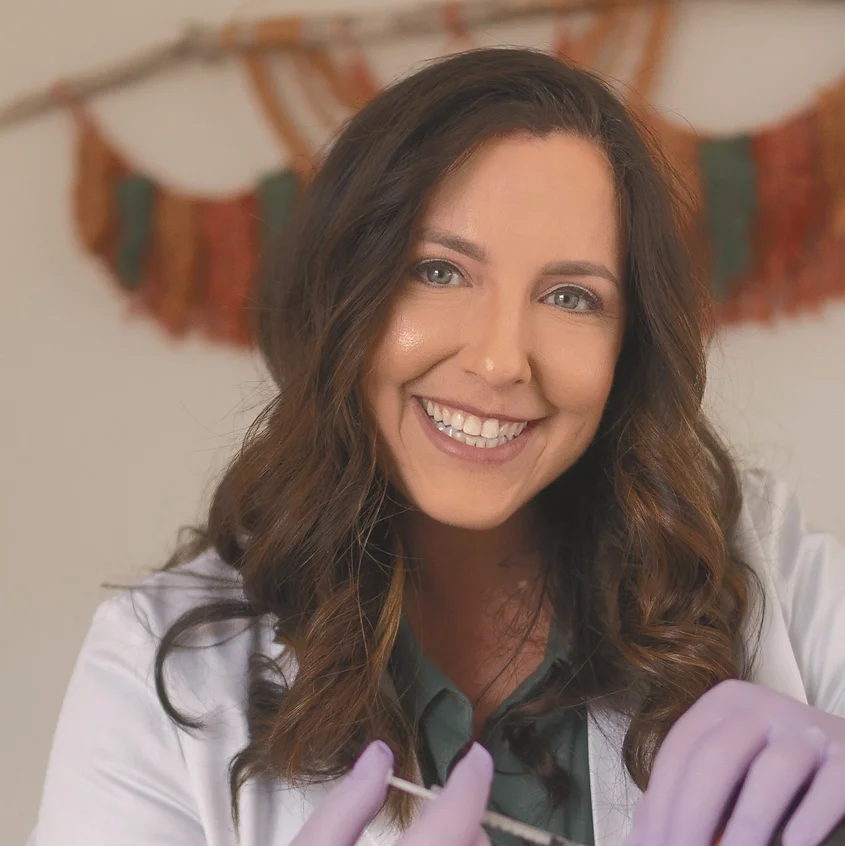
Navigating our sexual health when living with Sjögren’s can be confusing. Is the dryness from Sjögren’s, from menopause, or is it something else? Is pain during sex normal? Can I have a fulfilling sex life with Sjögren’s? We asked board-certified OB/GYN, Dr. Dana Shanis the top 5 questions women with Sjögren’s want answered.
1. How should women with Sjögren’s manage common symptoms, like dryness?
Vaginal and vulvar dryness is a common issue in patients with Sjögren’s and is even more common when there is an additional cause for a low estrogen state, such as menopause or taking birth control pills. If the symptoms only are bothersome during sex, a high-quality lubricant may be all that is necessary for comfort. However, if the symptoms occur other than during penetrative intercourse, or are severe, additional treatment may be beneficial.
The most effective treatment for vaginal dryness, also known as atrophy, is topical estrogen, which comes in various forms, such as a cream, tablet, capsule, or ring. If hoping to avoid hormonal treatment altogether, vulvar, and vaginal lubricants are non-hormonal and may help rehydrate the tissues to reduce dryness symptoms for many. Vulvovaginal laser treatments, such as the MonaLisa, may also be helpful for those who wish to avoid hormones or daily treatments, but research on the use of the laser in patients with Sjögren’s is lacking.
2. What can women with Sjögren’s do about dyspareunia?
Dyspareunia, or pain with sex, is common in patients with Sjögren’s and may be due to various causes. Often vaginal dryness creates painful friction during intercourse. Pain syndromes affecting the pelvic floor muscles, such as interstitial cystitis and endometriosis, are also more common in females with Sjögren’s. Issues with libido and arousal can also affect the relaxation of the vaginal muscles and lubrication, contributing to pain.
The first step in dealing with dyspareunia is to see a gynecologist who specializes in sexual health to determine the causes. For many, pelvic floor physical therapy and a good personal lubricant/vaginal moisturizer or treatment of atrophy may be all that is needed. Keeping up with your routine gynecologic care is also important to make sure that malignancy, infections, or skin conditions may not be contributing to the pain.
3. How can women with Sjögren’s handle sexual dysfunction with their partners?
Discussing sexuality with a partner can be intimidating and uncomfortable in general, but is even more difficult when there is dysfunction. Here are some steps that people with Sjögren’s can consider taking to handle sexual dysfunction with their partners:
- Open Communication: Start by having an honest and open conversation about the condition and how it may be affecting your sexual health. Sharing your feelings, concerns, and limitations can foster understanding and empathy.
- Educate Your Partner: Provide your partner with information about Sjögren’s, its symptoms, and potential effects on sexual health. This can help them understand the challenges you’re facing and create a supportive environment.
- Involve Healthcare Professionals: Consult a healthcare professional who is knowledgeable about Sjögren’s and its impact on sexual health. They can offer advice, suggest treatments, and provide strategies to manage symptoms affecting sexual function. Consider seeking the guidance of a therapist or counselor who specializes in sexual health. They can help you and your partner work through any emotional or psychological barriers affecting your intimacy.
- Experiment with Different Techniques: Be open to trying different sexual techniques and positions that may minimize discomfort. Experimenting with different approaches can help you find what works best for you and your partner.
- Prioritize Emotional Connection: Recognize that intimacy is not solely about physicality. Emotional closeness, affection, and intimacy can be just as important and fulfilling as sexual activity. Focus on building a strong emotional connection with your partner.
- Take It Slow: If you’re experiencing discomfort, communicate with your partner about the need to take things slowly. Establishing a pace that is comfortable for both of you can help reduce any physical discomfort and anxiety.
- Stay Patient and Positive: Dealing with sexual dysfunction can be challenging, but maintaining a positive outlook and being patient with yourself and your partner is crucial. Celebrate small victories and improvements along the way.
4. How can an OB/GYN help women with Sjögren’s?
Regular appointments with an OB/GYN are important for the ongoing assessment of your gynecological health and the monitoring of any changes or developments related to Sjögren’s. Your Ob/Gyn can look for vaginal infections that may cause discomfort, as well as screen for HPV infections, which are more common in people with Sjögren’s.
An OB/GYN can also assess for skin conditions, such as lichen sclerosus or lichen planus, which can worsen Sjögren’s symptoms and are often underdiagnosed. OB/GYNs are trained to diagnose and treat basic sexual dysfunction and vaginal dryness, so there should be no embarrassment when discussing these issues. While some people may need to be referred to a specialist in sexual health for complex issues, your general OB/GYN should be able to start you on the right track and help create a personalized plan to improve your physical, mental, and sexual health, as well as your quality of life.
5. How can women with Sjögren’s self-advocate?
The first step to being an advocate for yourself is to learn as much as you can about Sjögren’s, its symptoms, treatments, and potential impact on your health. The more you know, the better equipped you’ll be to communicate your needs. Find a healthcare provider that you trust, that ideally has experience with patients with Sjögren’s, and clearly express your symptoms, concerns, and any challenges you are facing. Use specific examples and be honest about how the condition is affecting your daily life. When preparing for a visit, make lists of symptoms, questions, and goals to help make visits more effective. Taking notes during visits may help you process the information more effectively later. Trust your gut, and if you do not feel like you are being heard or progressing appropriately, do not be afraid to ask questions, push back, or get a second opinion or referral. Many providers don’t know what they don’t know, and may not be offering you all the options currently available for treatment.
Make sure to build your support network of friends, families, and others who are living with Sjogren’s. Through support groups or online communities, sharing experiences and insights can help you learn more about managing the condition and advocating for your needs. And perhaps most importantly, practice self-care. Managing a chronic condition can be emotionally and physically taxing. Prioritize your mental health, including proper rest, stress management, and engaging in activities that bring you joy.

Meet Dr. Shannis, MD, FACOG
Dr. Shanis is a Board-Certified OB/GYN, collaborating writer with the National Institutes of Health, and owner of VHealth & Wellness. Dr. Shanis received her medical degree from Temple University School of Medicine and completed her OB/GYN residency at Sinai Hospital of Baltimore. She attended a fellowship at the National Institutes of Health, where she studied the gynecologic care of cancer survivors and other medically complicated women.
Dr. Shanis is passionate about empowering all women to improve their quality of life through evidence-based treatments, along with education support, and a sense of humor.